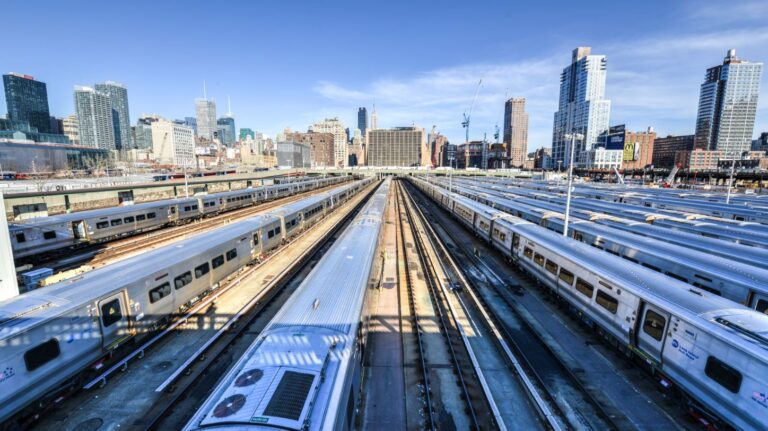The United States Department of Transportation’s Federal Railroad Administration (FRA) has issued a final rule establishing minimum safety requirements for train crew sizes, with the new rule requiring a second crew member on all trains.
The new FRA measures are designed to improve safety efficiency while maintaining current operational capabilities.
Key provisions in the FRA’s final rule include:
- Requiring railroads to staff every train operation with a minimum of two crewmembers (including a locomotive engineer and an additional crewmember who will typically be a conductor) that travel with the train and can directly communicate with each other
- Providing criteria for instituting one-person train crew operations in certain circumstances through exceptions to the two-crewmember mandate
- Give small businesses greater flexibility without sacrificing safety
- Require each railroad with certain types of one-person train crew operations to abide by minimum requirements to prevent uncontrollable train movements if a one-person train crew were to become incapacitated
- Require the lead locomotive of certain operations with a one-person crew be equipped with an alerter—a device or system installed in the locomotive cab to promote continuous, active locomotive engineer attentiveness by monitoring select, locomotive engineer-induced control activities—and the crewmember must alert the tester to confirm it is working before departure
- Require that each Class II and III freight railroad that (a) plans to initiate a one-person train crew operation after the final rule’s effective date and (b) will not be transporting certain types or quantities of hazardous materials determined to pose the highest risk in transportation
READ MORE: Lord McLoughlin outlines TfN’s transport infrastructure plan
The Association of American Railroads (AAR) has claimed that the new regulations are unnecessary, the evidence connecting crew size to safety not sufficient to support rule changes.
AAR report that FRA did not go forward with a similar rule in 2019 after failing to identify evidence to justify a safety need.
AAR also said that rail carriers prioritise data-driven safety improvements through extensive employee training and private investments in technology and infrastructure.
They added that these actions have brought tangible results, including: the casualty rate for Class I railroad employees down by 63% since 200—reaching an all-time low in 2023—and the overall train accident rate down 27% since 2000 and 6% since 2022.
READ MORE: Next stages of NPR between Liverpool and Manchester laid out
The FRA are understood to have reviewed and considered more than 13,500 written comments received during the 146-day comment period—in addition to the testimony from a one-day public hearing—in finalising the final rule.
FRA Administrator Amit Bose said: “The volume of comments from rail workers and their families, as well as comments from the general public impacted by long trains and other issues, raised legitimate safety concerns that railroads, on their own, have not been able to adequately address.
“Today’s final rule acknowledges the important role both crewmembers play in the safe operations of trains, and it comes at a time when the latest annual data reflects some troubling trends that demonstrate the need to improve safety.
“FRA is taking proactive steps to protect the public, workers, and communities where trains operate across the country.”
Achievements and innovations in transport planning will be celebrated at the third annual CiTTi Awards, which will be held on 26 November 2024 at De Vere Grand Connaught Rooms in London. Nominations are open now! Please visit www.cittiawards.co.uk to learn more about this unmissable event for the UK’s transportation sector.





